How to Make Hot Sauce
If you've ever wondered how to make hot sauce at home, my tutorial will walk you through the step-by-step process of making it right in your own kitchen. I've got a traditional fermented hot sauce recipe and a quick-cook version to cover all your needs.
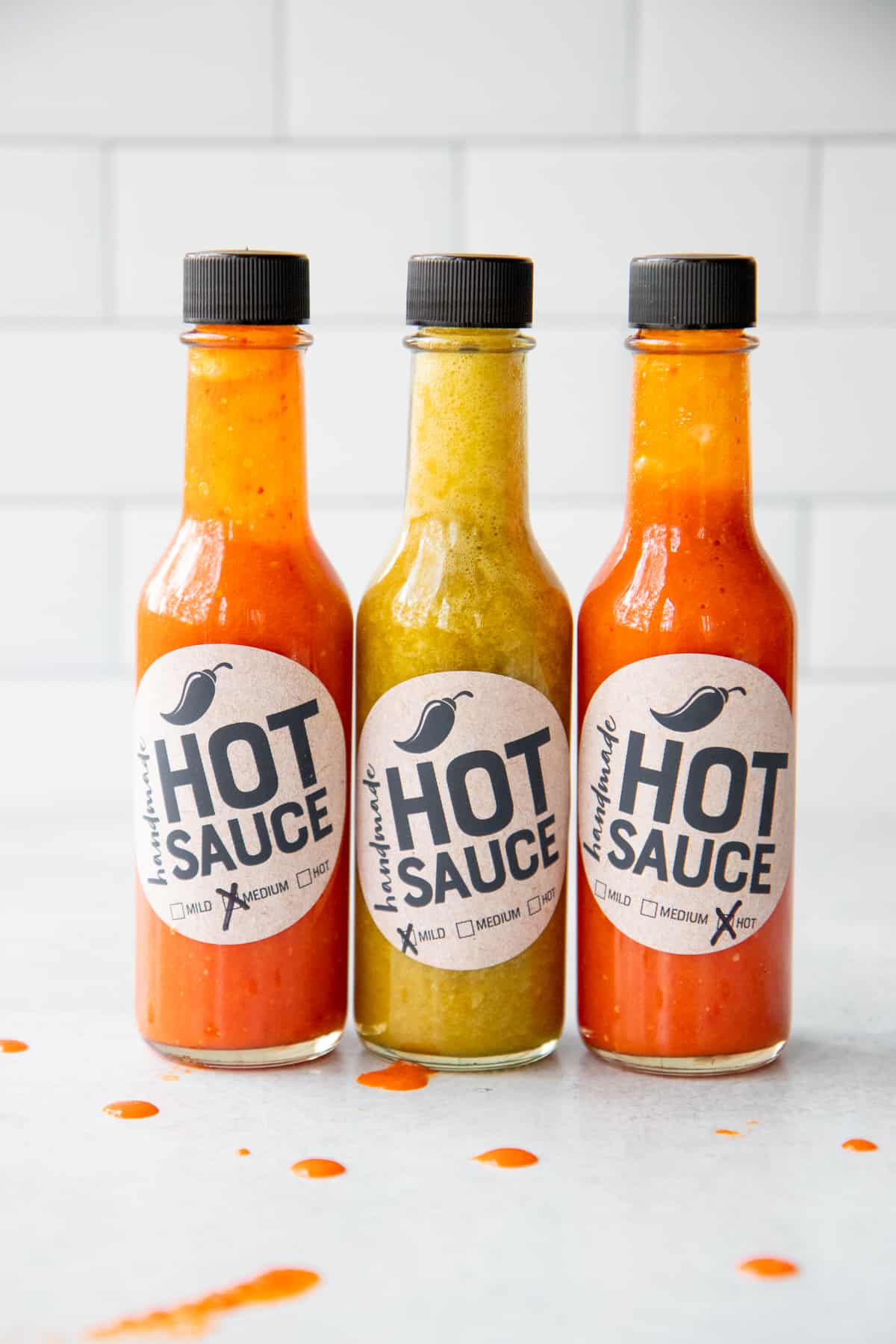
🔍 Recipe At-A-Glance: Homemade Hot Sauce
- ⏰ Prep Time: 10 minutes
- 🗓️ Fermentation Time: 5 days (or skip this using my quick cook version)
- 🌶️ Flavor Options: Anywhere from mild to super spicy
- 🎁 Good For: Everyday eating, awesome gifts, stocking stuffers, host or hostess gifts, teacher gifts, preserving your harvest, selling at farmer's markets
- 🧡 Difficulty: One of the easier fermentation projects out there, or make it easy-as-can be using the quick-cook option

"This might seem melodramatic, but this recipe kinda changed my life. On a whim I looked online for a hot sauce recipe, and I happened upon this one. I'm so glad I did! I absolutely encourage everyone to try the fermented version."
- JOEL -
Summarize and Save this Recipe Using:
Jump to:
- 🔍 Recipe At-A-Glance: Homemade Hot Sauce
- 🧡 Why You'll Love This Recipe
- 🌶️ The Ingredients You Need
- 🔁 Heat Variations
- 🫙 The Supplies You Need
- 📷 How to Make Hot Sauce (Fermented Version)
- 📷 How to Make Hot Sauce (Quick-Cook Version)
- ❄️ Storage and Preservation Directions
- 📥 Download the Free Labels
- 🙋🏻♀️ Homemade Hot Sauce FAQs
- 👩🏻🍳 My Expert Tips & Tricks
- 🍶More Fermentation Recipes
- 📖 Recipe
- 💬 Reviews
🧡 Why You'll Love This Recipe
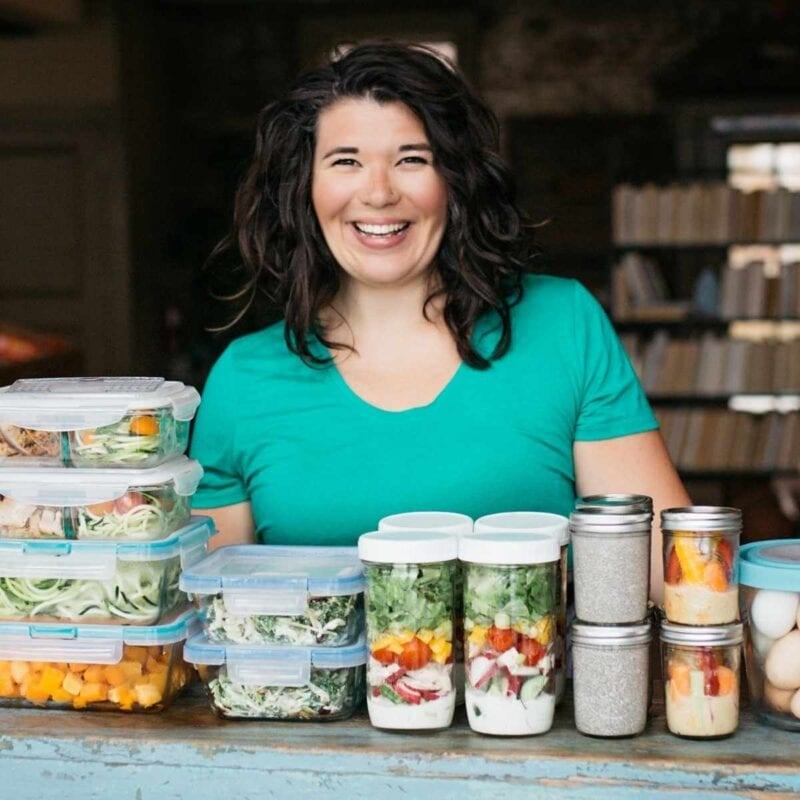
I use this exact recipe to make a big batch of customized hot sauce every single summer! I've fine-tuned this recipe and method over almost a decade, so you know it'll turn out great when you try it.
Here's why you'll love this recipe:
- Shockingly simple: It's so easy to make homemade hot sauce! I promise you can do this.
- Choose your own adventure: I include both a traditional fermented and a quick-cook version of hot sauce, so you can choose your own adventure when it comes to hot sauce creation.
- Infinitely customizable: No matter if you like it super mild or tears-in-your-eyes spicy, you can make your hot sauce your own.
- So useful: Put it on pumpkin enchiladas, my taco chili recipe, or my simple chicken quesadillas recipe. The possibiliites are endless!
- A recipe you can trust: Go ahead and read the reviews down below!
🌶️ The Ingredients You Need
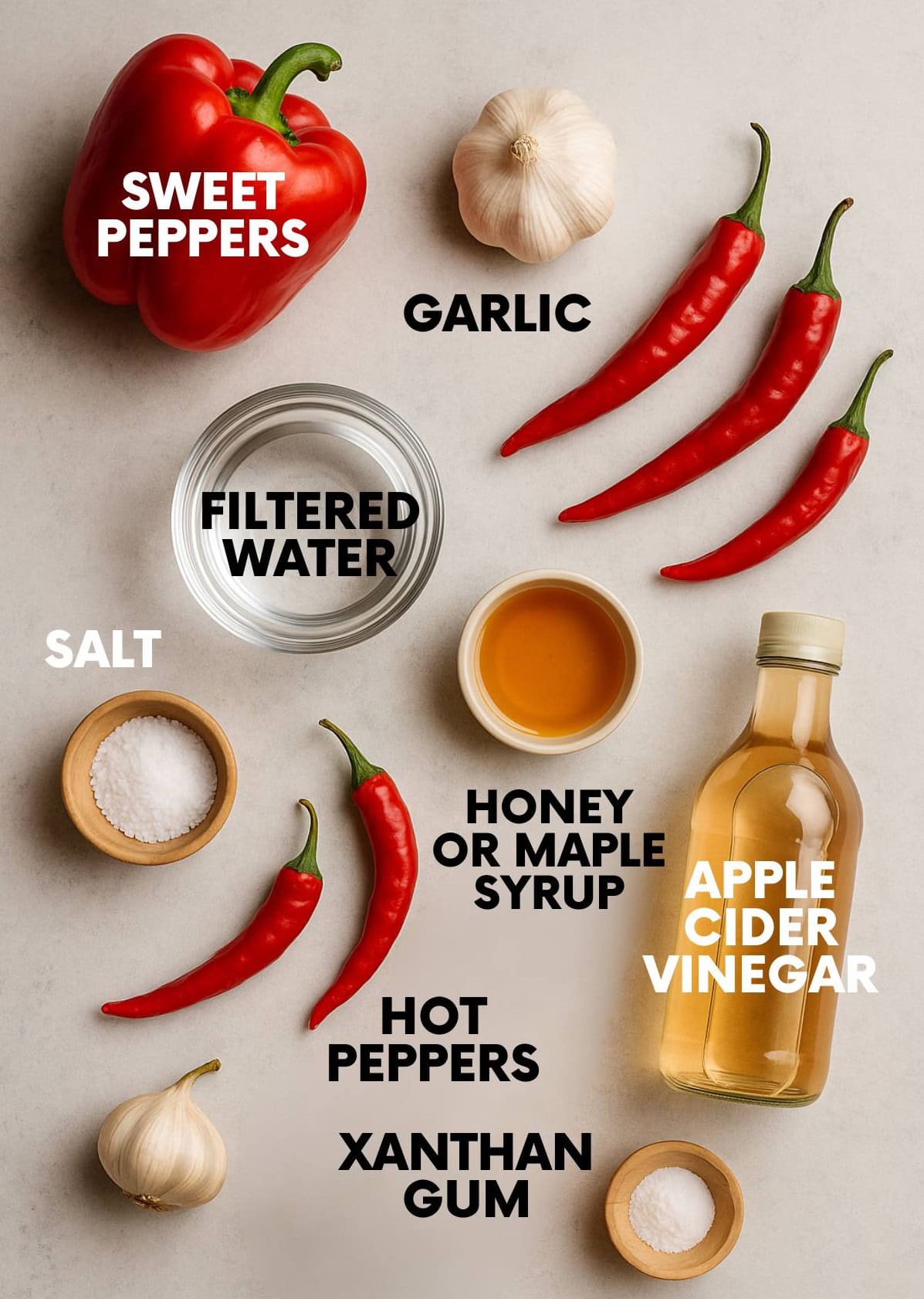
- Peppers: Jalapeños, reapers, Thai chilies, habanero, bell, cayenne, ghost peppers, serranos, OH MY. Which peppers you use really depends on your personal heat tolerance and the flavor profile you're looking for.
- Water: I recommend filtered water (especially if you are following our fermentation version) to make sure your flavor is crisp as possible.
- Xanthan gum (optional, but recommended): This emulsifier helps keep your hot sauce from separating. You'll have to give your hot sauce a good shake before using each time if you don't include it.
Make sure to check the recipe card below for the full ingredients list, along with quantities and my expert tips and tricks.
🔁 Heat Variations
The two hot sauces in the photos here were made with these mixes:
- Red Medium Hot Sauce: Red bell peppers, red cayenne peppers, and red jalapeño peppers (we let jalapeños ripen until they were red)
- Green Mild Hot Sauce: Green bell peppers, green jalapeños, and poblanos
Whatever you choose, remember that you can always add more spice in, but you can never take it out once it's been blended.
I tend to like a milder hot sauce, so I start with a 3:1 ratio of sweet peppers to hot peppers. When using a milder hot pepper, like jalapeño, I cheat to more like 2:1 or 1:1. Some folks use nothing but hot peppers-so it really is up to you to pick your poison here.
🫙 The Supplies You Need
You probably have all the supplies on hand to make this recipe, but if you want a few special items to make the project easier, here's what to grab:
- Fermentation weights and lids: If you want to make the fermented version of this recipe, some fermentation weights and lids make the process much easier.
- Wide mouth canning jars: To go with your fermenting weights and lids.
- Hot sauce bottles: You can put your hot sauce into any sealed container, but these hot sauce bottles are perfect for gifting.
📷 How to Make Hot Sauce (Fermented Version)
If you've ever made homemade sauerkraut, you already know the process we're using to ferment this hot sauce.
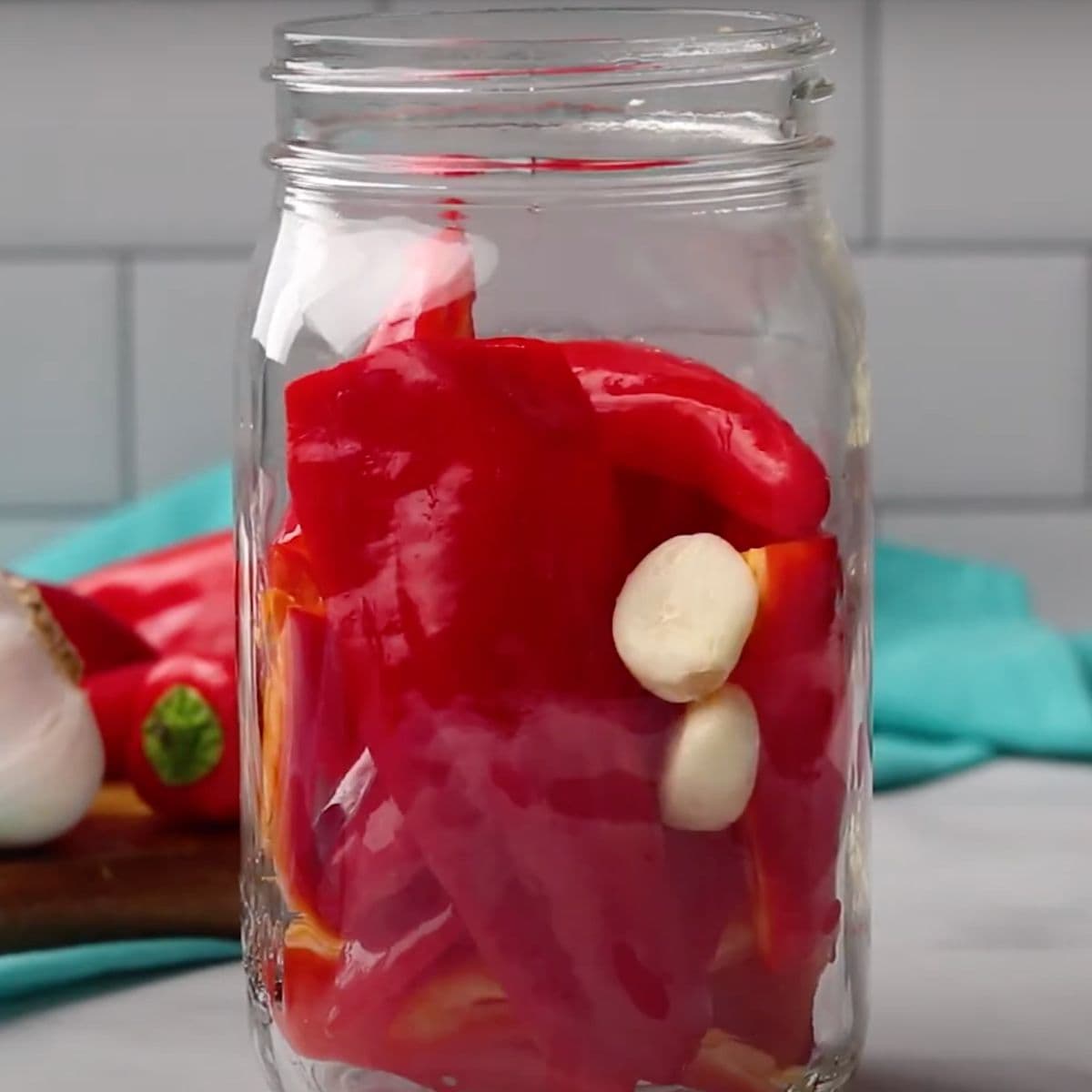
Step 1: Combine peppers and garlic in a wide-mouth canning jar.
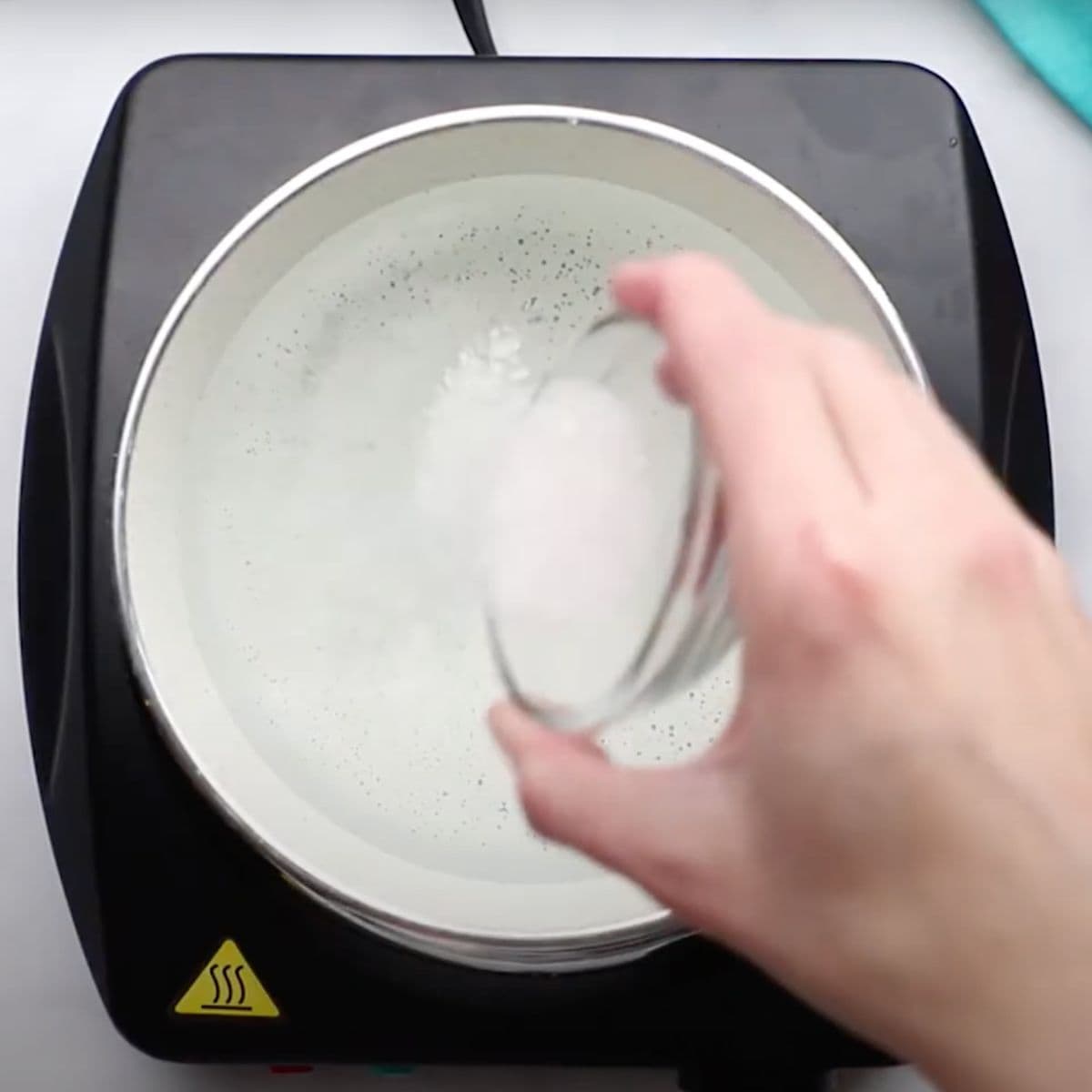
Step 2: Make the brine by combining the water and salt in a saucepan and heating until salt is melted. Let cool.
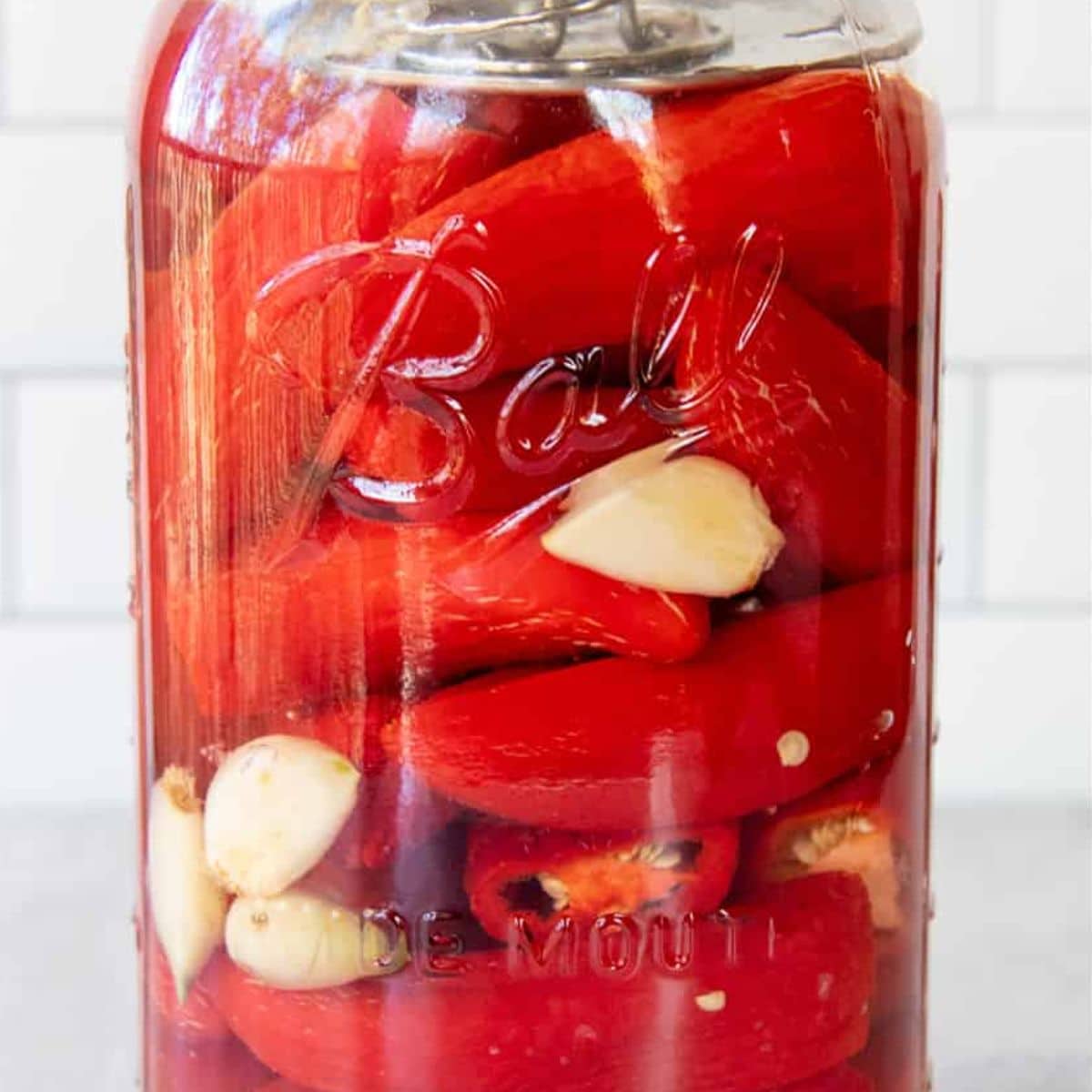
Step 3: Cover the pepper and garlic with the brine, fit with a fermentation weight and lid, and let ferment out of direct sunlight for 5-7 days.
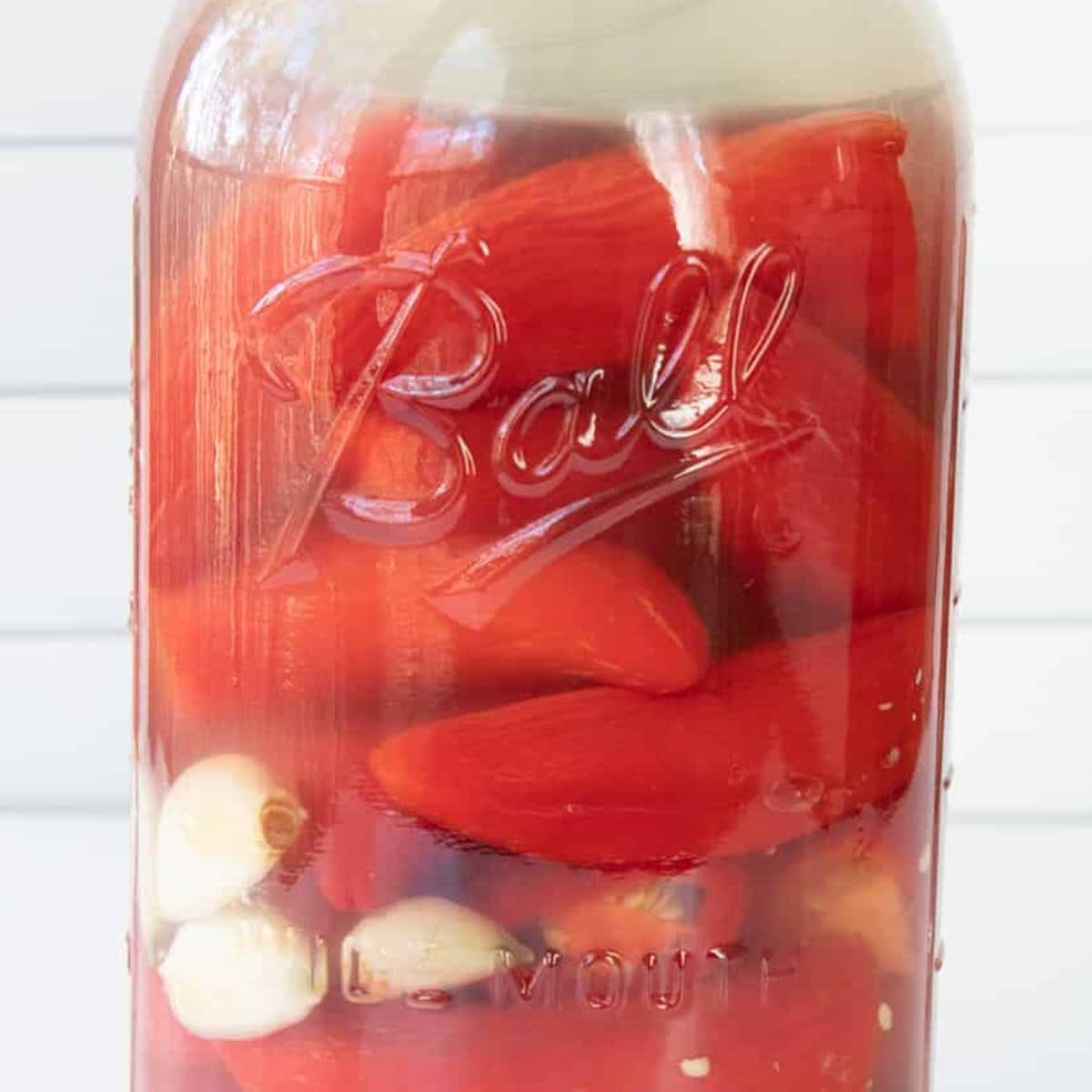
Step 4: The brine will look cloudy when it's ready-this means the fermentation is working!
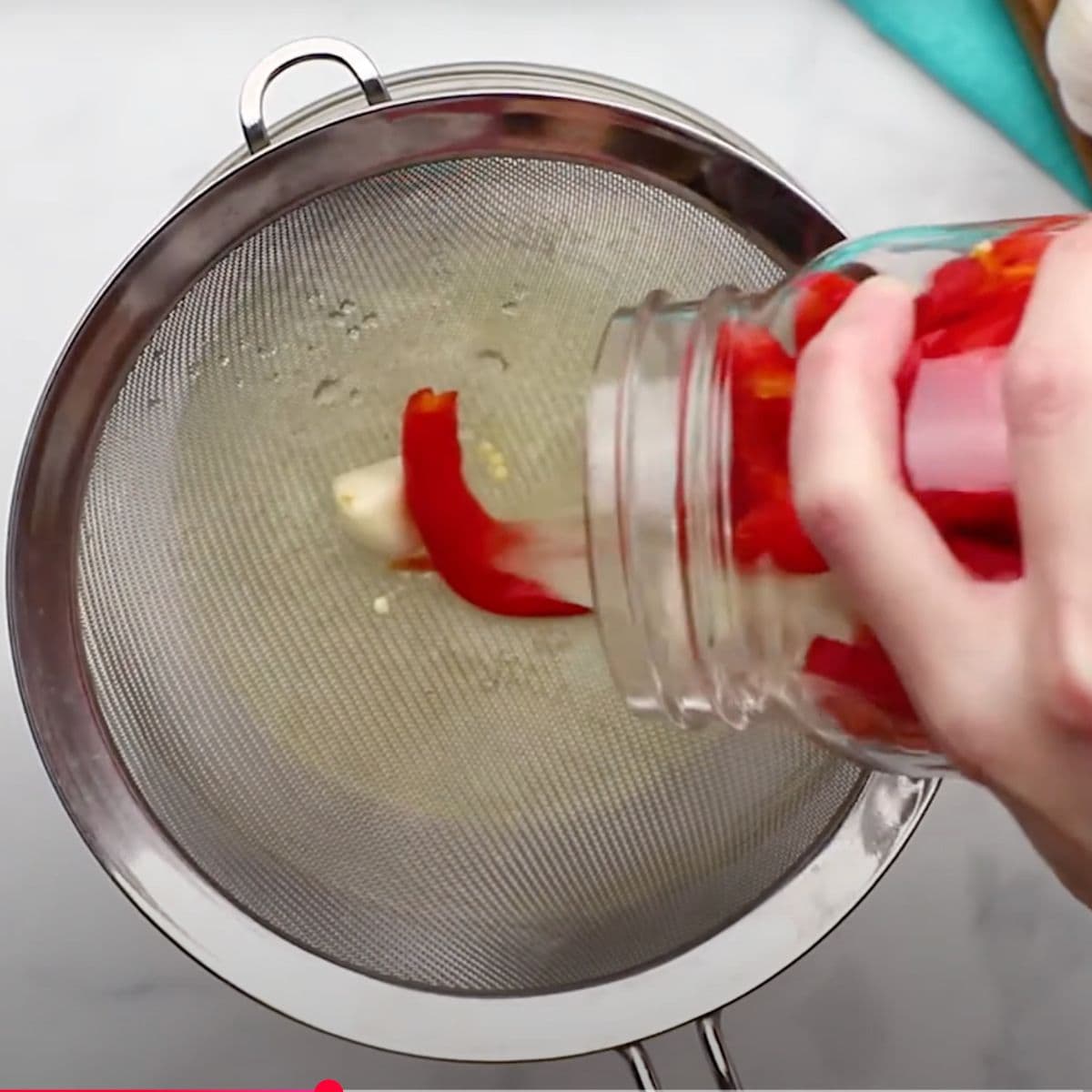
Step 5: Drain the peppers, reserving the brine.
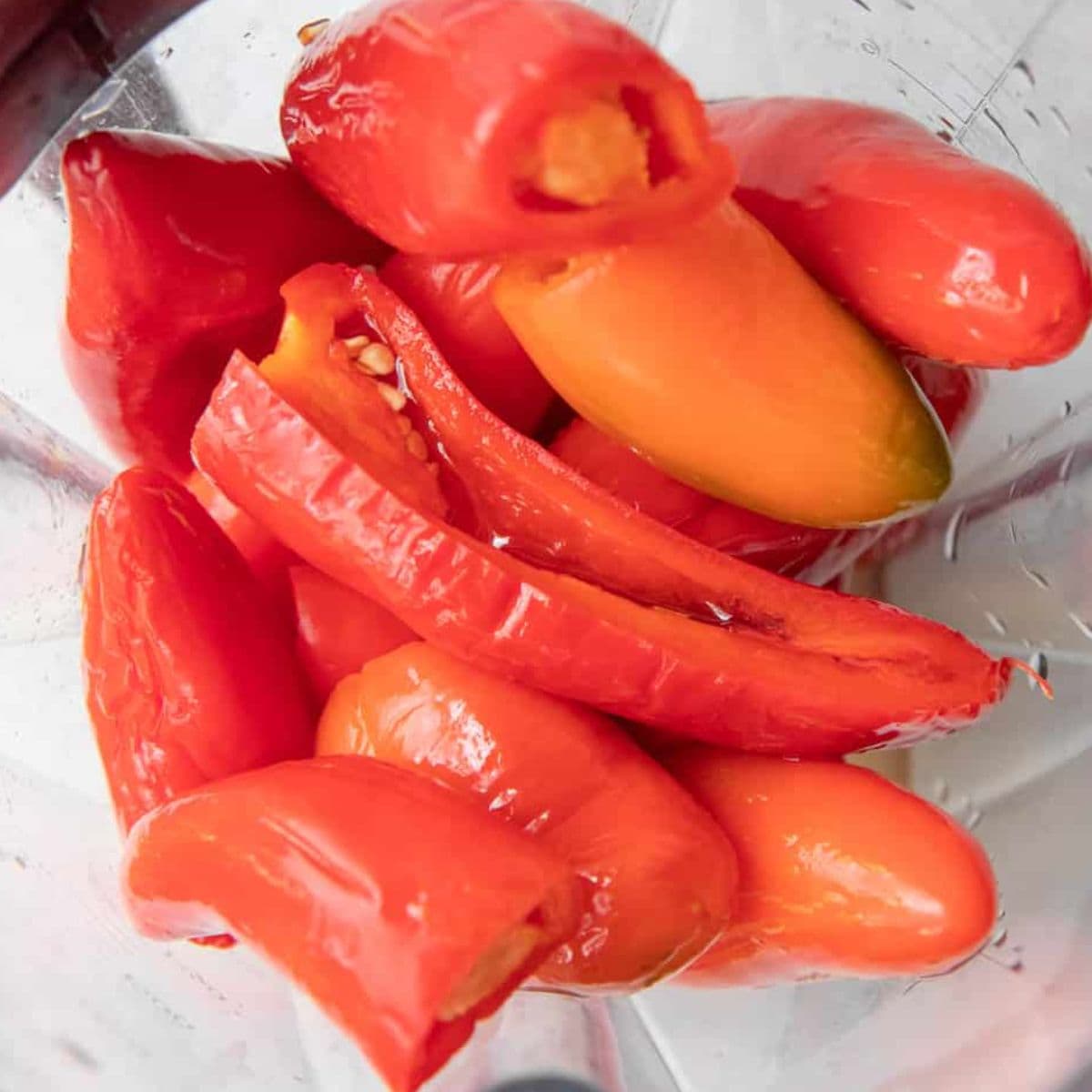
Step 6: Combine the peppers and garlic, vinegar, honey or maple syrup, and 1 cup of brine in a blender.
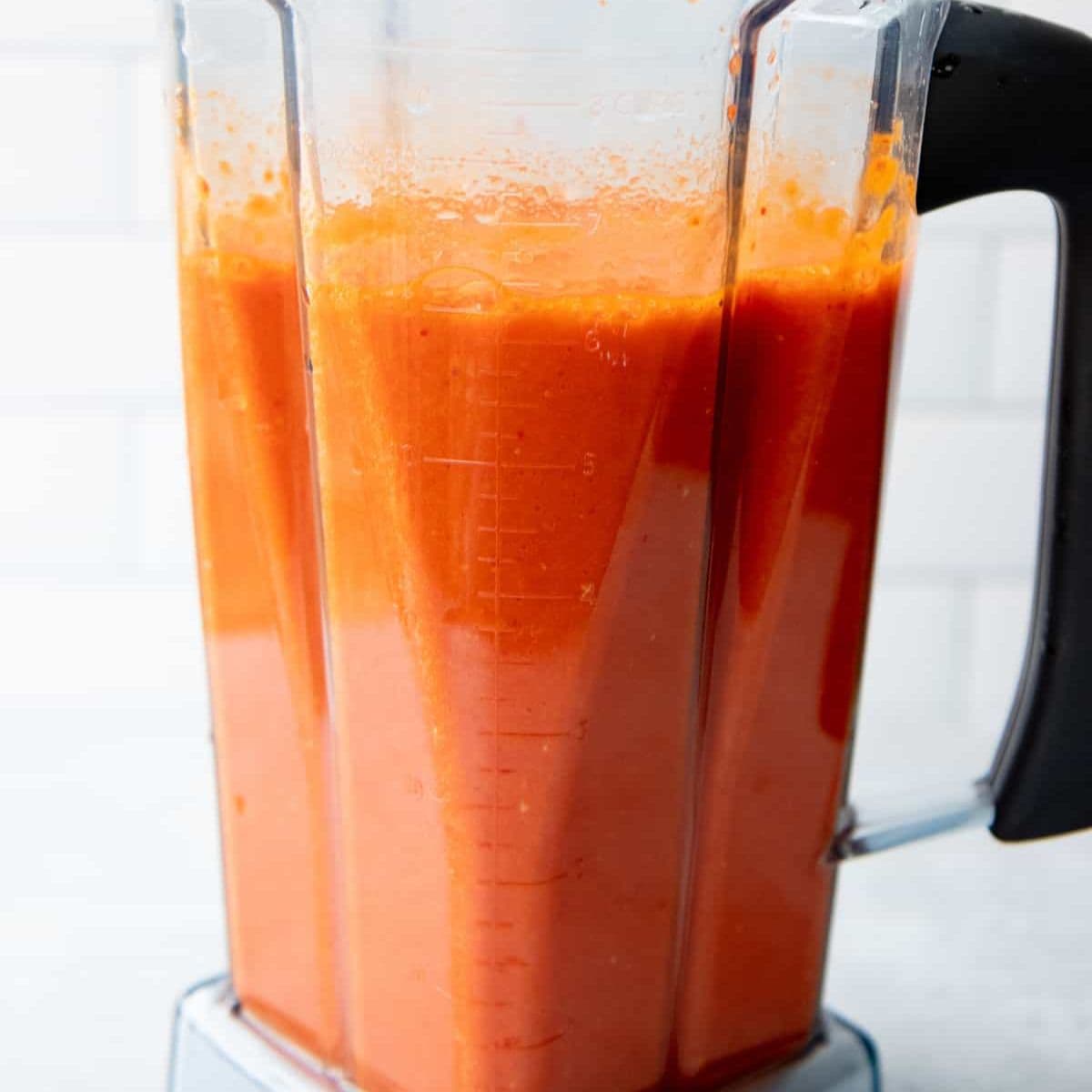
Step 7: Blend until silky smooth, adding in additional brine to thin out if necessary. If you using the xanthan gum, sprinkle it in while the blender is running and blend for an additional minute.
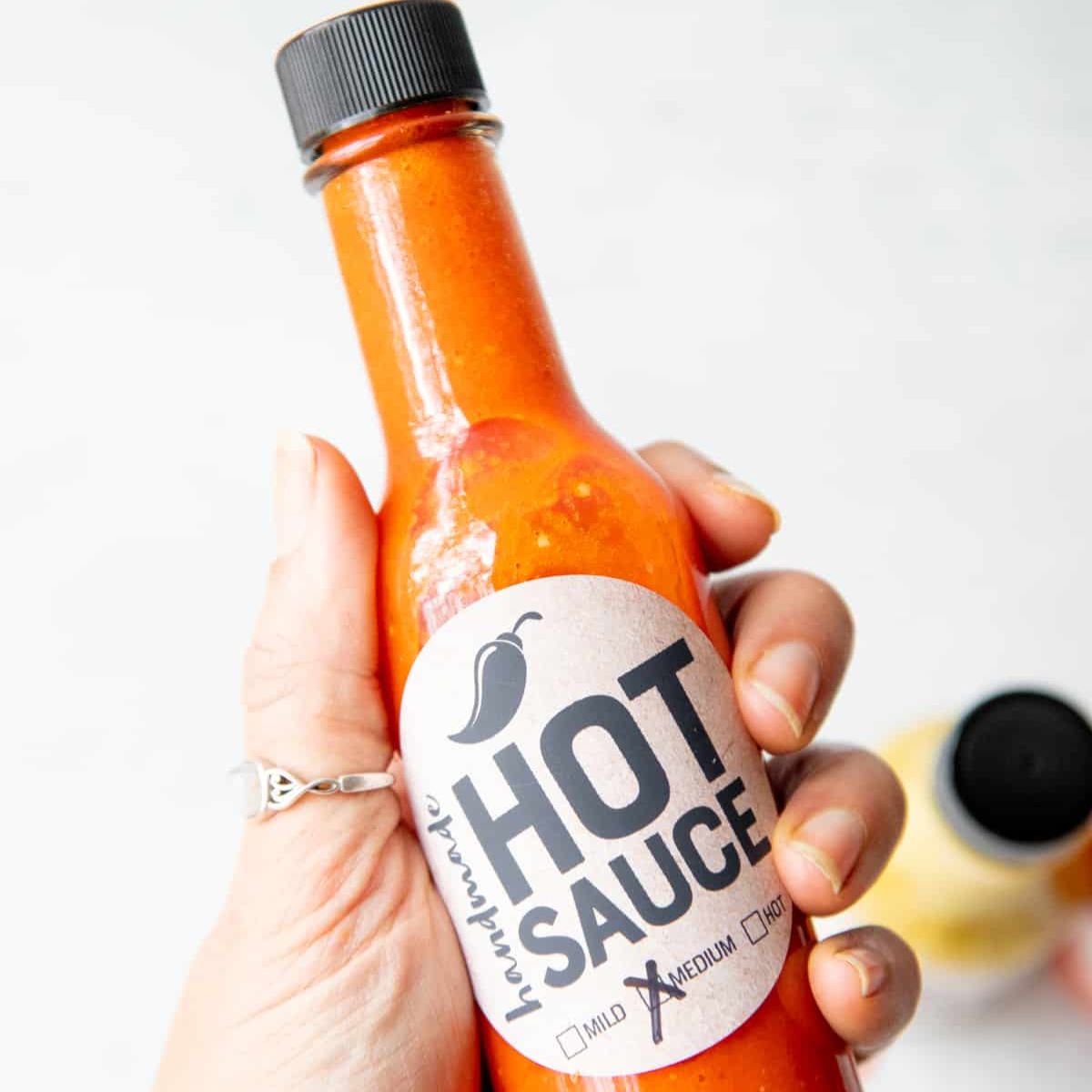
Step 8: Bottle and label!
📷 How to Make Hot Sauce (Quick-Cook Version)
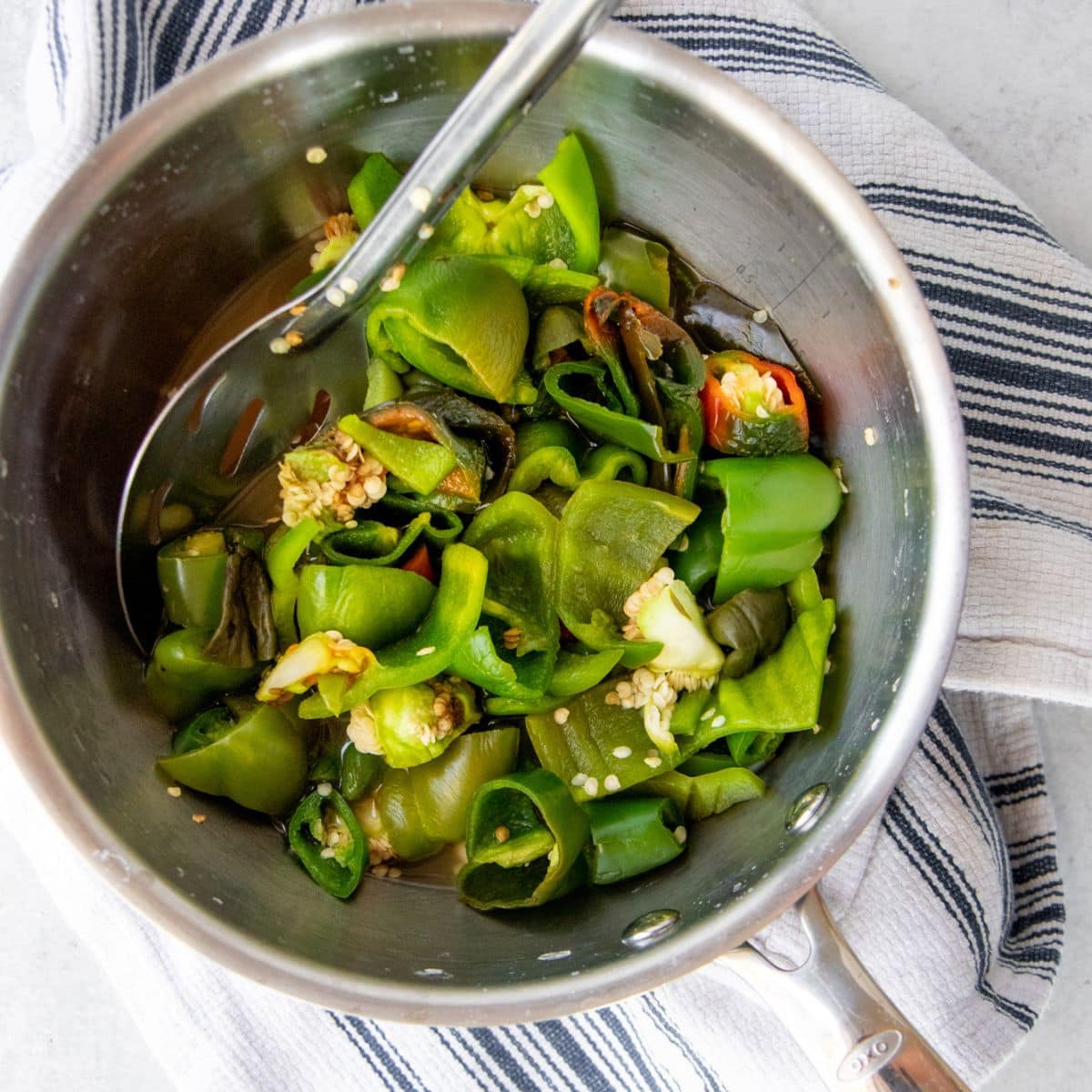
Step 1: Combine the peppers, garlic, water, salt, vinegar, and honey or maple syrup in a medium pan. Bring to a boil and simmer until the peppers and garlic have softened.
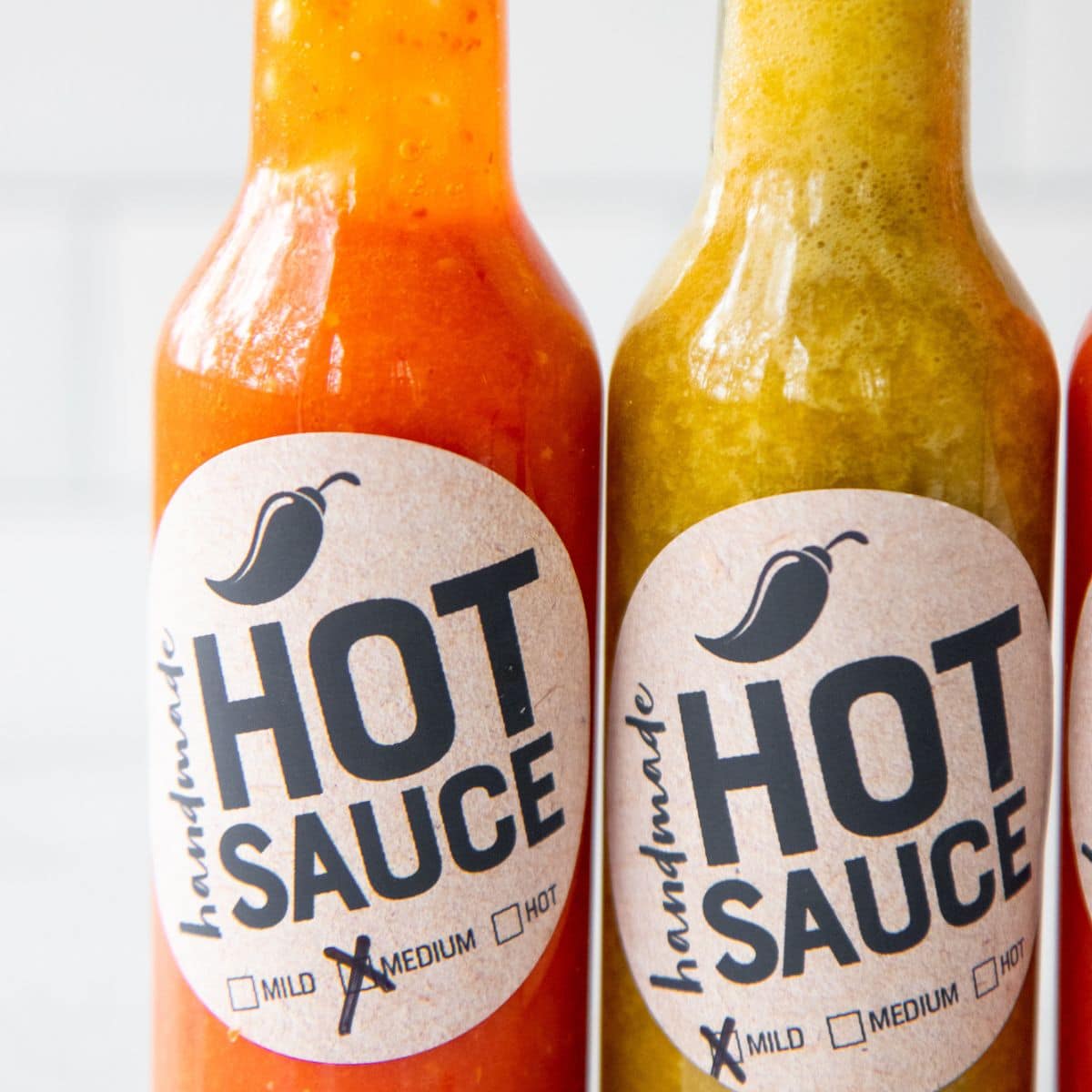
Step 2: Pour mixture into a blender and blend until very smooth. While the blender is running, sprinkle in the xanthan gum and blend for an additional minute.
Want to save this recipe?
❄️ Storage and Preservation Directions
- Fermented version: thanks to the beneficial bacteira, it will last 3+ months in the fridge easily.
- Quick cook version: lasts in the fridge for 2-3 weeks
- Freezing: Hot sauce freezes great for even longer preservation!
- Canning: If you choose to can hot sauce to extend the shelf life, use a hot sauce recipe that has been tested and proven safe for canning instead of my recipe here.
- Labeling: Make sure to label your hot sauce well so you know exactly what it is, what spice level it is, and when it was made. I have free labels you can download by filling out the form below.
📥 Download the Free Labels
I've made you some free labels for your hot sauce bottles that you can print off at home. Just fill out the form below to get them delivered right to your inbox.
🙋🏻♀️ Homemade Hot Sauce FAQs
You can use either white distilled vinegar or apple cider vinegar here. I prefer the slight fruity flavor of apple cider!
If you don't want to make fermented hot sauce, you can quick cook the ingredients on the stove and bottle them (and enjoy your sauce the same day).
👩🏻🍳 My Expert Tips & Tricks
- No brown hot sauce: Mix and match different types of peppers to get the flavors and heat levels you desire, but make sure you stick to the same color family to avoid a yucky brown hot sauce.
- Stay safe: When working with hot peppers, it's important to: wear gloves while handling and cutting, wash hands extremely well after handling, wear goggles, and work in a well-ventilated area
- Label your bottles: Fill out the form in the post to get my free hot sauce labels. These are designed to print on Avery 2 ½" round water-resistant labels.
- The sauce thickens: The hot sauce will thicken quite a bit in the fridge, so keep that in mind as you decide on the consistency while blending.
- Got foam? Your hot sauce may be foamy when you're finished blending. If so, let the hot sauce rest for 15-20 minutes, then scrape off any foam before bottling.
- No fermentation weights? You'll need to use some sort of weight to keep the peppers submerged under the brine to prevent mold growth. A budget optional is to fill a zip-top sandwich bag with water and submerge it in the top of the jar and secure cheesecloth or a thin piece of cotton to the top of the jar with a rubber band.
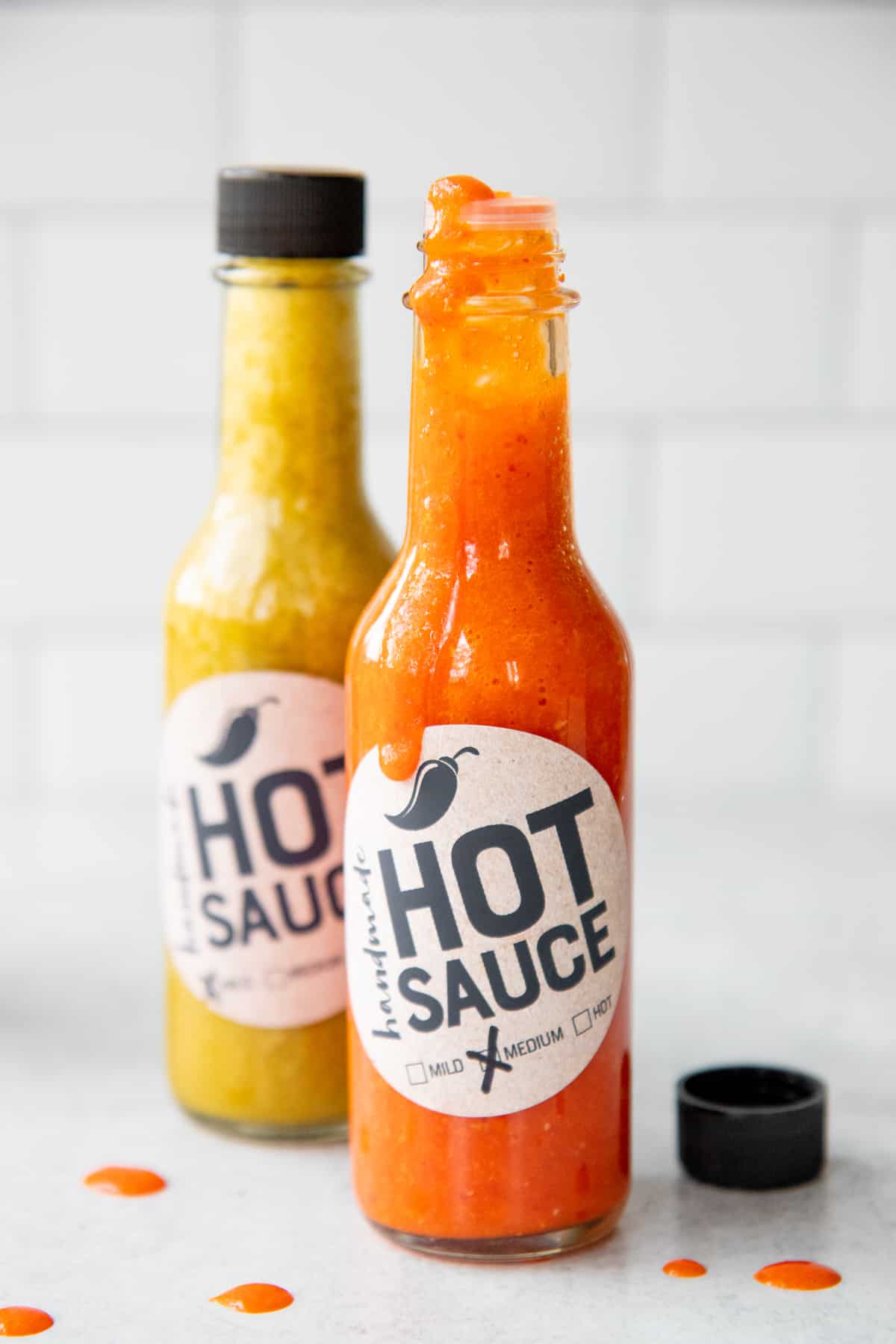
🍶More Fermentation Recipes
If you tried this Homemade Hot Sauce or any other recipe on my blog, please leave a 🌟 star rating and let me know how it went in the comments!
📖 Recipe

Homemade Hot Sauce (Fermented or Quick Cook)
Ingredients
- 1 ½ pounds peppers of your choosing a mix of sweet peppers and hot peppers, tops/stems removed, halved
- 6 cloves garlic peeled
- 4 cups filtered water
- 4 teaspoons sea salt
- ⅓ cup apple cider vinegar
- 1 tablespoon honey or maple syrup optional
- ½ teaspoon xanthan gum optional (see notes)
Instructions
For the Fermented Version
- Place the peppers and garlic in a clean wide-mouth quart canning jar. Set aside.
- To make the brine, heat the filtered water and sea salt in a medium saucepan until the salt has dissolved completely. Let cool to room temperature.
- Pour the brine over the peppers and garlic, completely submerging them. If you run out of brine, you can make more by mixing 1 cup of warm filtered water with 1 teaspoon of sea salt.
- Fit the jar with a fermentation lid or cheesecloth secured with a rubber band (see notes on weighing down the peppers if using cheesecloth). Place in a warm, dark spot for 5-7 days, or until the brine looks cloudy and small bubbles begin to appear when you tap the side of the jar. Make sure the peppers stay submerged under the brine during the entire fermentation process to prevent mold-growth.
- When the fermentation time is up, strain the brine, reserving it. Place the fermented peppers and garlic in a blender, and add in 1 cup of the brine, plus the apple cider vinegar, and honey or maple syrup, if using. Blend until completely smooth, adding in additional brine to reach the desired thickness. The hot sauce will thicken in the fridge.
- While the blender is running, sprinkle in the xanthan gum, if using, and blend for an additional minute.
- Transfer to a bottle and store in the fridge for 3-6 months.
For the Quick Cooked Version
- Combine the peppers, garlic, 2 cups of water, 2 teaspoons of sea salt, apple cider vinegar, and honey or maple syrup, if using, in a medium pan over medium-high heat. Bring to a boil, reduce heat, and simmer for 10-15 minutes, or until the peppers and garlic have softened.
- Pour mixture into a blender (making sure to leave the cover vent open, but covered with a kitchen towel) and blend until very smooth.
- While the blender is running, sprinkle in the xanthan gum, if using, and blend for an additional minute.
- Transfer mixture to a squeeze bottle and store in the fridge for 2-3 weeks.
Video
Notes
- If you choose to use cheesecloth during fermentation, you'll need to use some sort of weight to keep the peppers submerged under the brine to prevent mold growth. You can purchase fermentation weights to do this, or fill a zip-top sandwich bag with water and submerge it in the top of the jar.
- In this recipe, xanthan gum works as an emulsifier, stabilizer, and thickener. If you choose not to use it, your hot sauce will separate in the fridge. Just give it a good shake each time you go to use it.
- The hot sauce will thicken considerably in the fridge, so keep that in mind as you decide on the consistency while blending.
- Depending on the power of your blender, your hot sauce may be foamy when you're finished blending. If so, let the hot sauce rest for 15-20 minutes, then scrape off any foam before bottling.




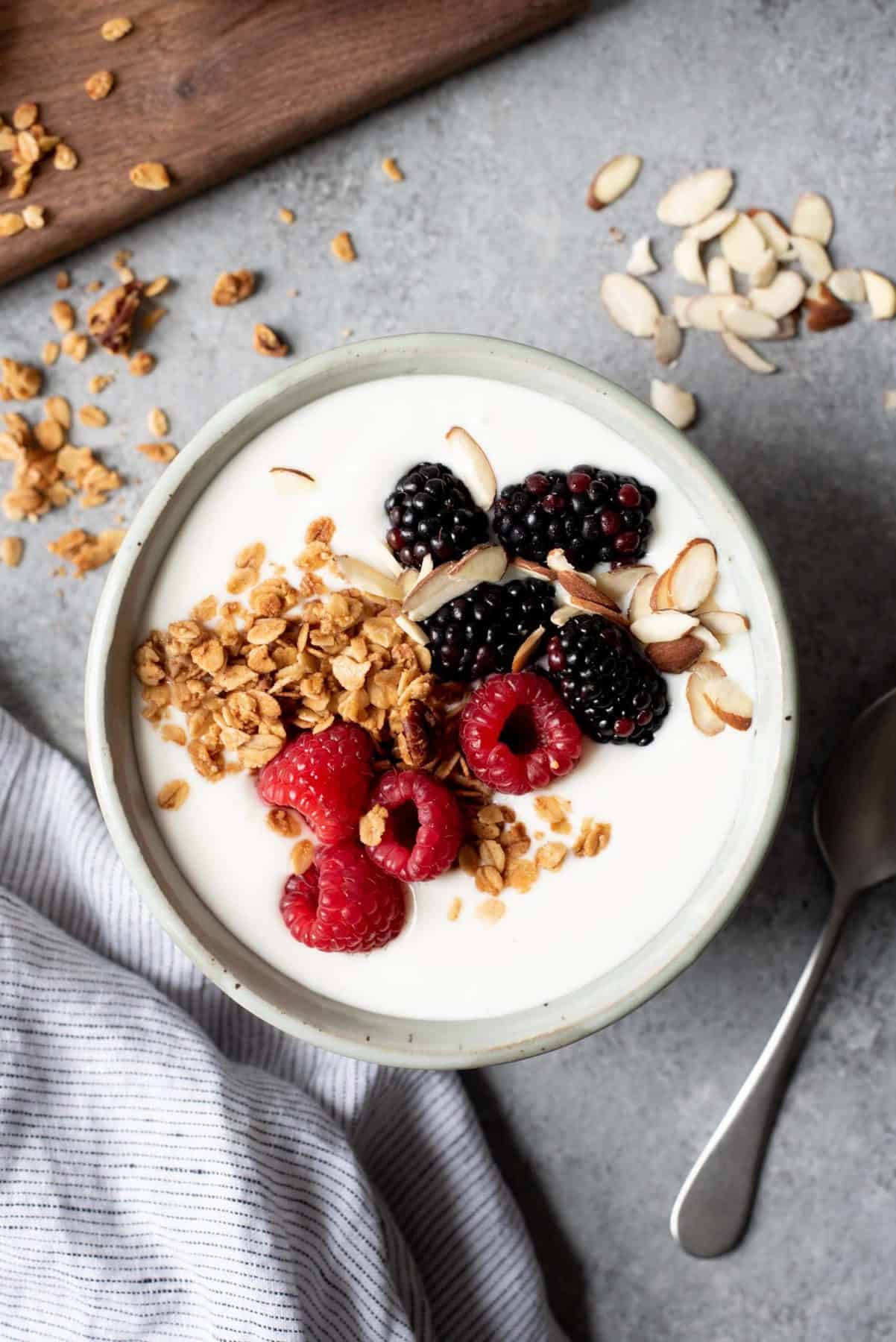
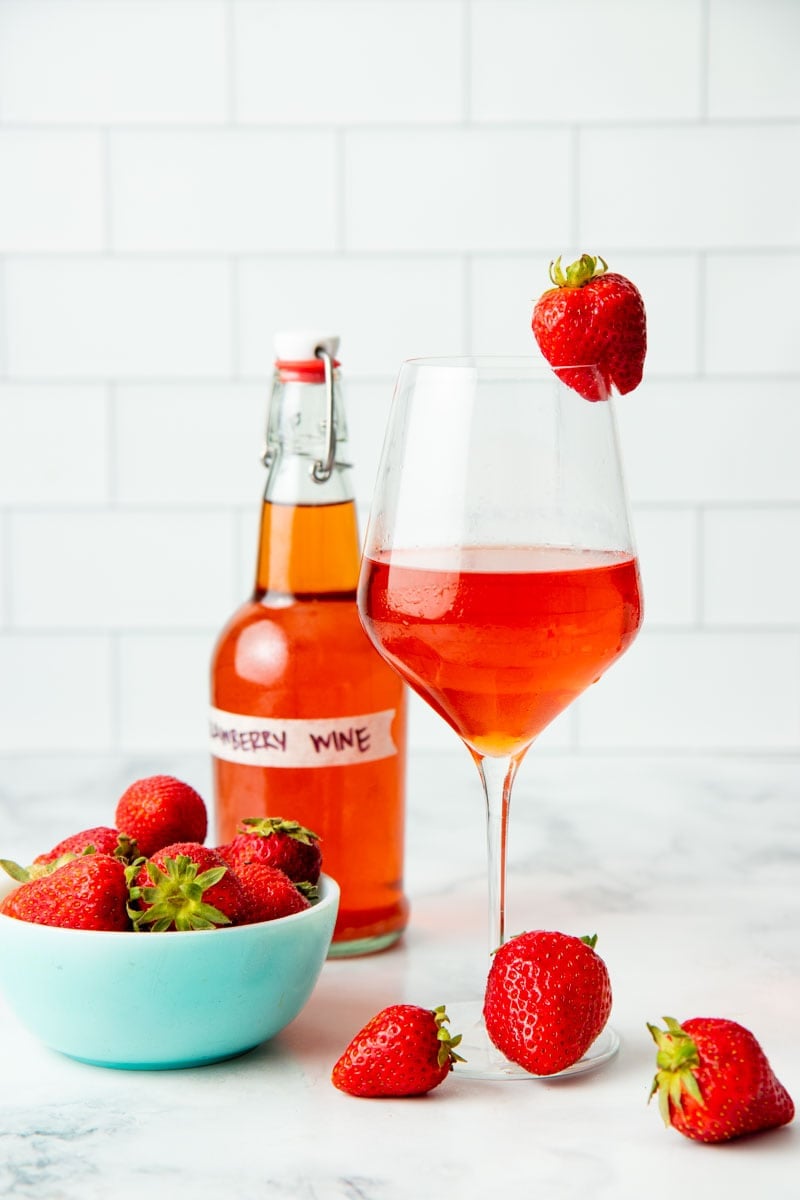
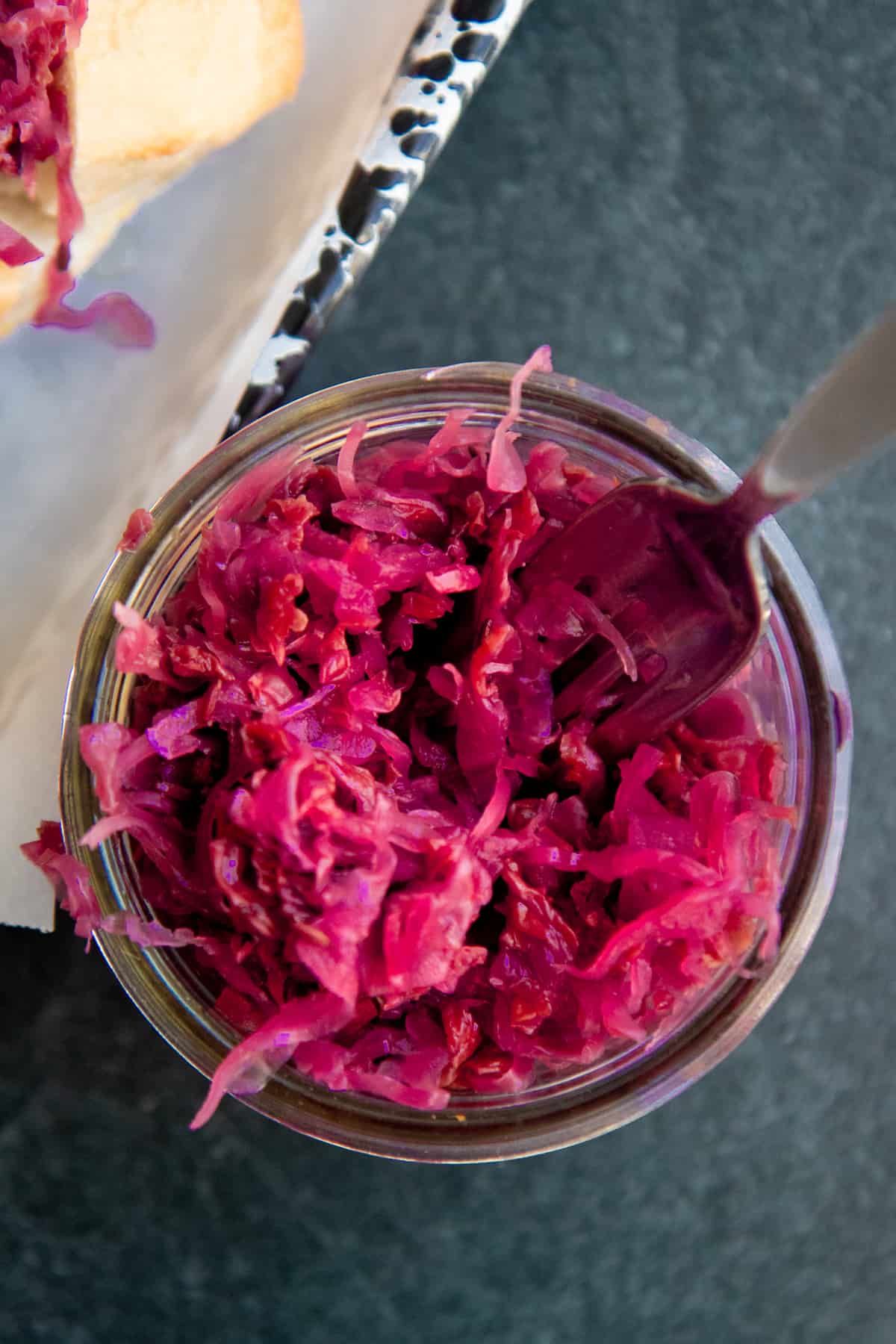
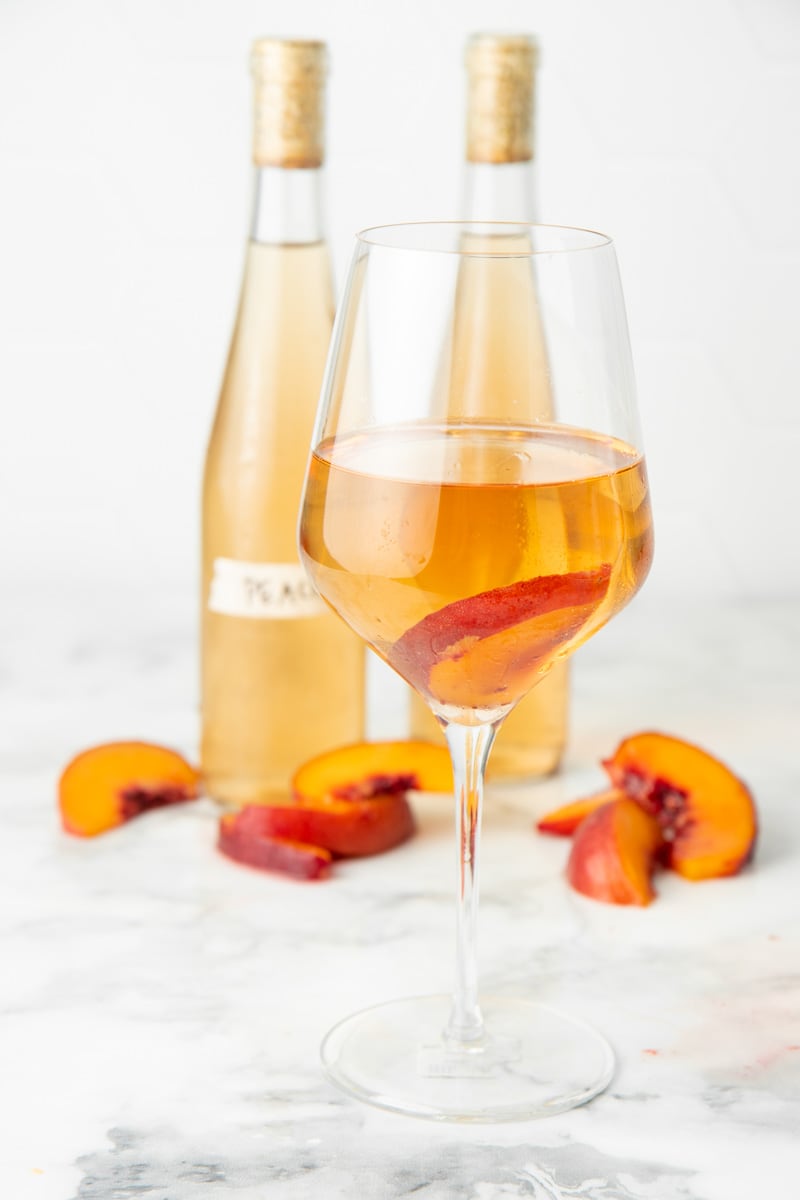
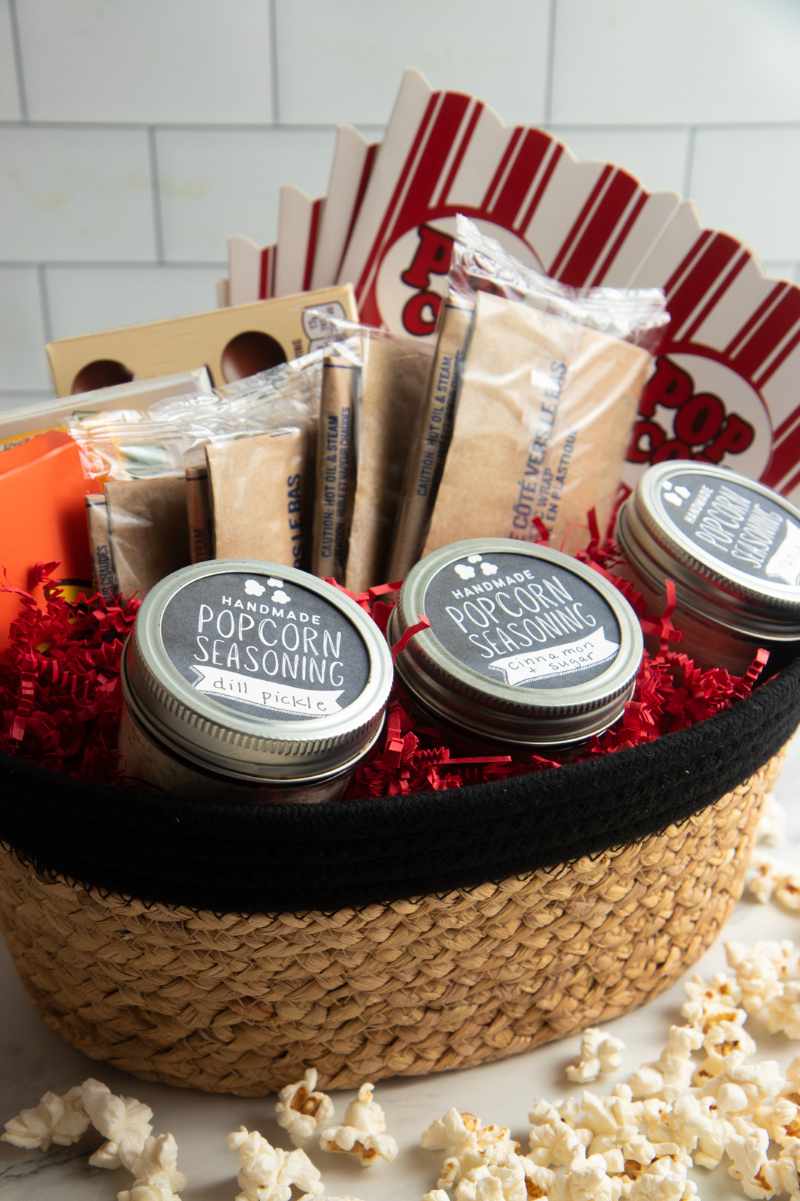
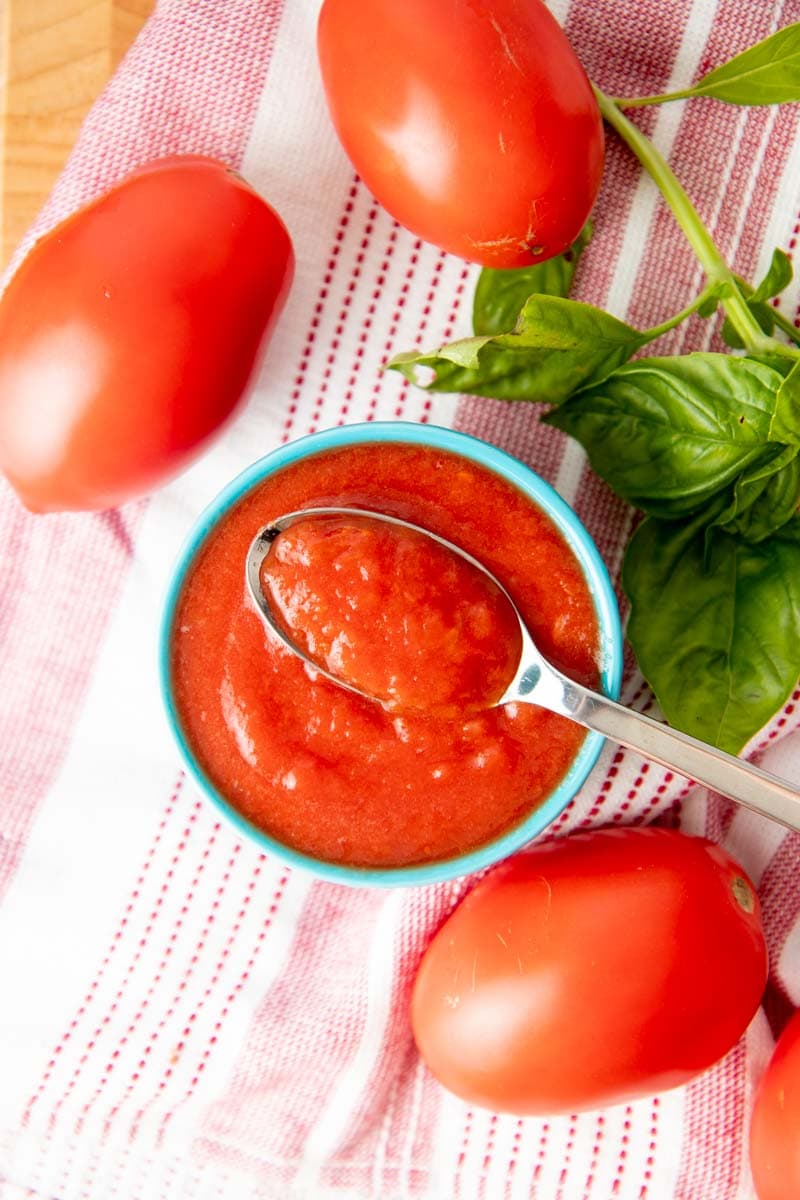
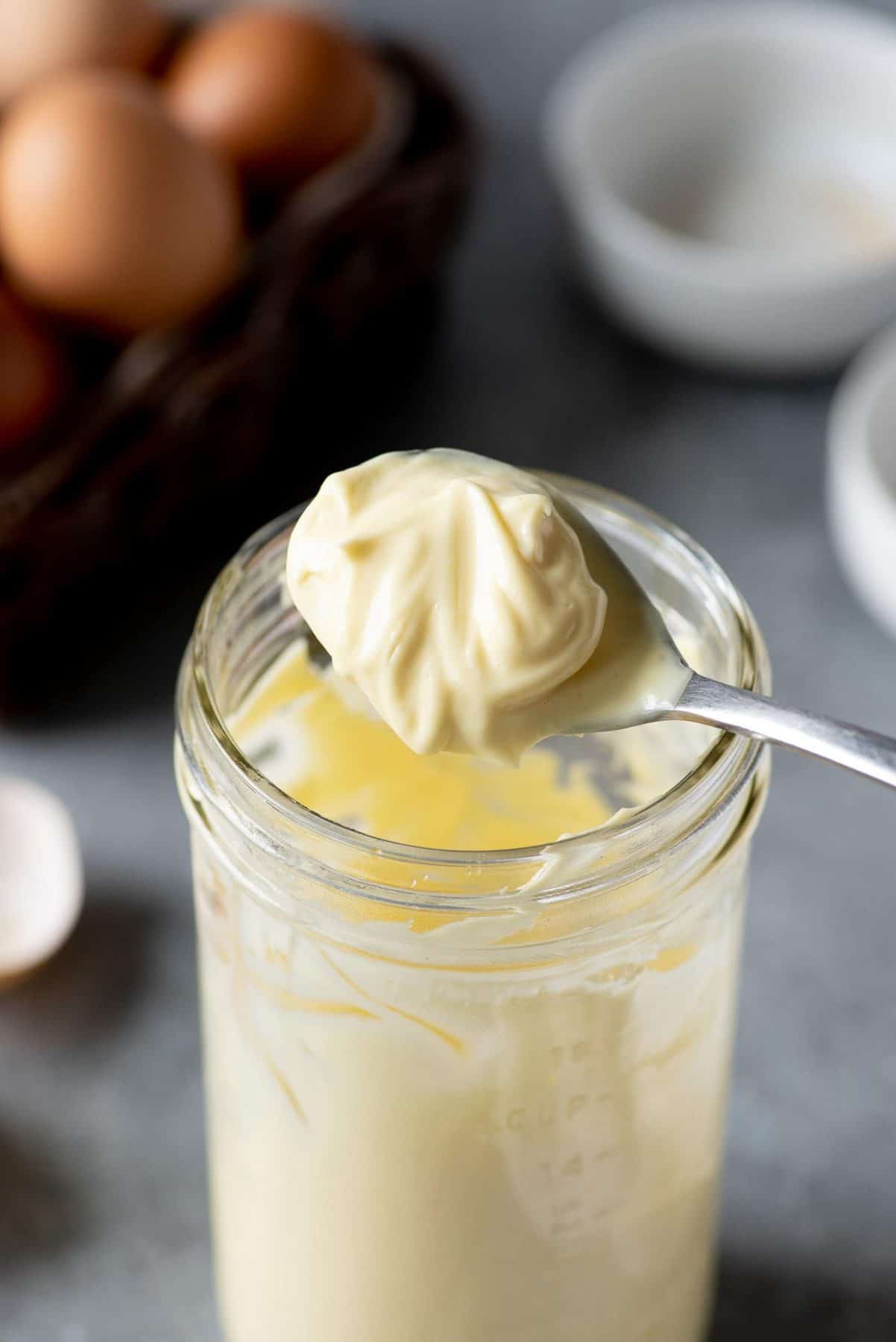

Hi! I would like to can this recipe into small 125ml mason jars using the cooked recipe. Will this work? Any special instructions?
Both the fermented and quick hot sauces made using this recipe need to be refrigerated. If you'd like to can it, you'll need to look for a recipe developed and tested for canning safety. Unfortunately, that's not this one!
Do I have to remove the seeds and ribs from the pepper
No, you can leave them in!
Is there any risk of dangerous mold growing on the peppers during fermentation? At 7 days there was a hint of white mold on some of the top peppers. I took them out and am using the rest of the peppers but I'm worried about the brine/everything being contaminated. If this happens do you throw out the batch?
Yes, if the peppers were not 100% submerged in the brine, I would throw out the entire batch—that may have been dangerous mold. If the peppers were fully submerged, and there was still white mold on top, it might be mold at all. Kahm yeast is harmless and often people mistake it for mold. https://www.fermentingforfoodies.com/kahm-yeast-mold/ But also: when in doubt, throw it out.
Hi everyone im about to try this recipe based on all the fabulous reviews. Is everyone using the optional ingredient Xantham gum? Just curious if I omit that item am I compromising the quality? What's the difference between added and not?
The xantham gum is an emulsifier, so adding it helps the hot sauce stay one consistent texture even after it's rested. It doesn't impact flavor or quality at all either way. If you don't use it, you just need to shake up the hot sauce before using because it will separate.
This might seem melodramatic, but this recipe kinda changed my life. Four or five years ago, I had more hot peppers in the garden than I knew what to do with. On a whim I looked online for a hot sauce recipe, and I happened upon this one. I'm so glad I did! I absolutely encourage that everyone try the fermented version - if you don't have fermentation jars or cheesecloth, a paper towel and rubber band will work in a pinch, but do make sure the ingredients are completely submerged! After the first batch I ordered some bottles online and never looked back. Making hot sauces is now a hobby and, a little bit, a part of my identity now. I make several new hot sauces each year, and share them with family and friends by throwing little hot sauce tasting sessions with buttered crackers and 6-12 hot sauces. I've adapted the recipe to incorporate fruits and different types of peppers (think mango habanero, pineapple ginger ahi limon, or this year's standout Blue Bee with blueberries, a pepper "stop light" mix of scorpion, aji limon, and jalapeno, a bit of ginger, and a little honey to taste after the fermentation). Despite my improvisations, the basics of the recipe serve me well every time - brine your ingredients in a mason jar for a week, pour off and reserve the brine, add about 1/3 cup of some type of vinegar (usually apple cider or white), and blend. I'm honestly so glad I tried this recipe, and I hope Cassie sees this and knows that all these years later she's spread a little joy my way.
Hi Joel: This comment brought me so much joy. You literally made my week! I'm so glad this recipe kicked off a new passion for you and all your creations sound amazing!
This recipe makes the BEST hot sauce. I'm going to be giving this as gifts!
Can I ferment it longer than seven days?
Hi Catherine! You can definitely let it ferment as long as you want/need it to. The main difference will be that the longer it ferments, the funkier or tangier in flavor it will be. If you’d like to slow the fermentation down, you can leave it in a cooler location. The warmer it is the faster it will ferment. But it will still be perfectly safe fermenting for longer!
I want to make this as Christmas gifts, but I'm not sure how much this recipe will give me. If I used the bottles that you have linked, will it fill all of them? Also side question, can you just use a pickle pipe to ferment the mixture, without anything else?
Hi Charlotte! The recipe makes approximately 2 quarts (or 64 fluid ounces). The bottles we linked are a case of 12 and each one holds 5 fluid ounces, so 60 fluid ounces total. One batch should fill all the bottles! You can definitely use a pickle pipe, but you'll still need to make sure the peppers stay submerged. A fermentation weight (I think the pickle pipe brand sells a version they call pickle pebbles), or a ziplock baggie filled with extra brine will do the trick!
Hi! I just made this and it's SO good!!
For my next batch, if I use a fermentation weight, can I use a pickle pipe type lid instead of cheesecloth?
Hi Megan! We're so glad you love it! You can definitely pickle pipe lids if you have them!
My peppers just finished fermenting and realized I forgot to add garlic! 😣 can I add it after? Did I ruin this recipe?
Hi Kristen! You didn't ruin it! If you add the garlic after fermenting, it just won't keep as long. But it should still be good. You may need less of it because it won't have mellowed during the fermenting process. Add some when you blend it and taste it. Then add more if you need it. Then use it up quicker. I suppose you could stash your ferment in the fridge while you ferment the garlic separately, then blend the two together. You'll have to wait longer, but it should work! So you have options! Please let us know which way you go and how it works out for you =)
Hello!
I'm going to use your recipe to make hot sauce favours for our wedding!
I was just wondering if you knew approx how much your recipe makes in ml's?
I'm trying to figure out how many times I'll need to double it.
Thank you for your help ☺️
Hi Kim! That's amazing—what a fun (and delicious) idea! The yield for this recipe is approximately 2 quarts and it will vary from batch to batch. So while I can't give you an exact amount, I can say that 2 quarts is approximately 1893 mL. I hope that helps!
The cooked/quick recipe says to use 2 cups of water, yet the ingredients list says 4 cups of water. Which do I use?
Hi Matty! You should use whatever amount is listed in the instructions for the particular style you're making. For the quick cooked version, you need 2 cups of water!
Hi,
If I make a brine, doesn't that make it difficult to achieve the desired salt percentage, given the weight and high water content of the actual vegetables in the jar as well?
I figured the amount of salt would be based on the total weight of water and vegetables together.
Hi Jaron! Ferments are very forgiving and the salt ration in the brine is definitely enough to cover this amount of peppers!
After making the hot sauce , can it be frozen to store it longer?
Hi Jacque! Absolutely—you can definitely stash this in the freezer!
D'you reckon I could make a sauce from fermented hot peppers, mixed (in the blender) with roasted sweet peppers? Otherwise the same recipe as above.
Hiya! We haven't tried that before, so we're not sure how it would turn out. But if you'd like to add the roasted sweet peppers after fermenting the hot peppers, the resulting mixture won't have as long of a shelf-life than if you fermented all the peppers together. Either way the sauce needs to be kept in the fridge, but if everything is fermented, it will last much longer!
Is the brain supposed to be thick slimy?
No, it shouldn't be slimy at all. We recommend tossing it and trying again.
For the quick method, you state 2 cups water and 2 teaspoons seasalt....but for the fermented it was 4 and 4, is that correct? Also, is the amount of vinegar the same for both methods? Quick method says tomato vinegar to pan but does not say amount....was wondering if that is less for the quick method like the water and seas salt is.
Hi Jeff! The amount of vinegar is the same for both methods!
Hello,
I recently learned of and started making Fermented Hot Honey. Would using that for the optional honey mess up the recipe since the honey is already fermented?
Hi Chuck! We've never used fermented hot honey in our hot sauce, but it sounds delicious! It shouldn't interfere with your ferment because the optional sweetener is added after fermenting the peppers. If you give it a go, please let us know how it turns out for you!
Hello. I have about 50 pounds of roasted hatch green chile. Can I used the already roasted chiles or should I used fresh?
Hi Travis! You can definitely use the roasted peppers in this recipe. You could also use a mix of roasted and fresh, if you prefer. Another benefit of having so many pounds of peppers is you can really experiment to find your perfect blend! If you're fermenting, just make sure everything stays under the brine and you'll be good to go. Let us know how it turns out for you! =)
Can I use yellow banana peppers as the main pepper in this recipe? Can I mix banana peppers with one red bell pepper to create an orange colored sauce? Thanks!!!
Hi Julie! Thank you for your patience as our offices were closed for summer break. You can mix and match peppers to get the heat level that works best for you. We only recommend that you stick with the same color family so you don't end up with an unappetizing brown sauce. Let us know how the banana pepper and red bell mix up for you! We hope you love it =)
If I wanted to add other fruit/veggies.. say mango or pineapple... etc.. when would I make that addition? Also in the initial fermentation? or would the fruit go in unfermented at blending?
Hi Mike! You can add other fruits or veggies to the mix of peppers as long as you make sure whatever you add stays under the brine. Let us know how your fruity experiments go—we love hearing how they turn out!